This week Mike the Pole Barn Guru answers reader questions about adding length to endwall post set too deep into ground in order to attach to end trusses, how to best prevent termites after slab and skirt have been poured, and if a UC-4B treatment would suffice on a “half wall” RV storage unit.
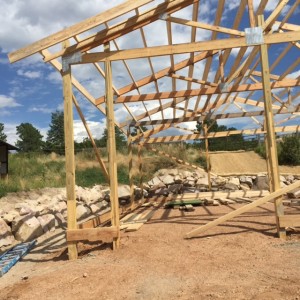 DEAR POLE BARN GURU: If you put couple of the laminated post too deep on an end wall can they be added upon to make them work and still be strong enough? A stupid rookie mistake on me. ALAN in KELSO
DEAR POLE BARN GURU: If you put couple of the laminated post too deep on an end wall can they be added upon to make them work and still be strong enough? A stupid rookie mistake on me. ALAN in KELSO
DEAR ALAN: Provided they are not corner columns, it might be possible, however would require engineering approval in order to do so. Engineer will need to know how far below end truss top(s) of columns will be.
DEAR POLE BARN GURU: Hi. I forgot to put termite treatment on the pad before building my 40×60 in Maryland. I now have 5″ concrete floor on inside and a 3 foot concrete skirt around the outside. My pad was crushed concrete aggregate and I have 2 foot round concrete footers around the poles. Would you recommend doing a typical treatment of drilling 6 inches from the wall and down 18 inches to fill w liquid or could i put the liquid on the outside of the 3 foot skirt? I’m assuming better to do this on the outside of building than on inside, agree? JAVO in PRINCE FREDERICK
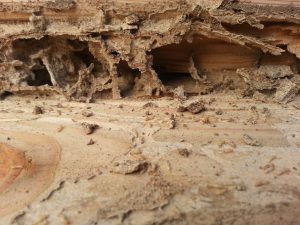 DEAR JAVO: I have, for better or worse, always lived in pretty much “The Great White North”, where termites are never a problem. In termite prone locales, pre-construction treatment is obviously a best case scenario (for extended reading: https://www.hansenpolebuildings.com/2019/09/pre-construction-termite-treatment/). In your circumstance, it would be best for me to defer and direct you to your local pest control experts, as they will know what best will meet your needs.
DEAR JAVO: I have, for better or worse, always lived in pretty much “The Great White North”, where termites are never a problem. In termite prone locales, pre-construction treatment is obviously a best case scenario (for extended reading: https://www.hansenpolebuildings.com/2019/09/pre-construction-termite-treatment/). In your circumstance, it would be best for me to defer and direct you to your local pest control experts, as they will know what best will meet your needs.
 DEAR POLE BARN GURU: I am building a post frame pole barn with half walls to store an RV. I am planning on using 6×6 UC4B (CCA) posts suspended in a concrete footing/collar. They bottoms of the posts (gravel floor) will be exposed to weather (North Alabama) during blowing rain. My question is would a post protector or post sleeve be necessary or beneficial to protect against rot? And if so would a post protector need a weep hole with washed stone in this scenario? BENJAMIN in CHEROKEE
DEAR POLE BARN GURU: I am building a post frame pole barn with half walls to store an RV. I am planning on using 6×6 UC4B (CCA) posts suspended in a concrete footing/collar. They bottoms of the posts (gravel floor) will be exposed to weather (North Alabama) during blowing rain. My question is would a post protector or post sleeve be necessary or beneficial to protect against rot? And if so would a post protector need a weep hole with washed stone in this scenario? BENJAMIN in CHEROKEE
DEAR BENJAMIN: As long as you are using UC-4B rated treated timbers, and maintain proper termite treatments to your soil, rot should never be an issue. Half-walls can be problematic, as they do not allow for transfer of wind shear forces through siding to ground. You will want to make certain to build from engineer sealed site specific plans to ensure structural adequacy.
 DEAR DAN: Every Hansen Pole Building is fully engineered to meet or exceed your jurisdiction’s minimum design wind speed requirements (in Ventura county Vult = 100 mph). When wind is a client concern, we always recommend designing to higher than minimum design wind speeds. In many instances, added investments are minimal. Most important is designing to correct wind exposure for your particular site. Most other providers sell Exposure B rated buildings, when many sites are actually Exposure C. For extended reading on wind exposure, please read:
DEAR DAN: Every Hansen Pole Building is fully engineered to meet or exceed your jurisdiction’s minimum design wind speed requirements (in Ventura county Vult = 100 mph). When wind is a client concern, we always recommend designing to higher than minimum design wind speeds. In many instances, added investments are minimal. Most important is designing to correct wind exposure for your particular site. Most other providers sell Exposure B rated buildings, when many sites are actually Exposure C. For extended reading on wind exposure, please read: 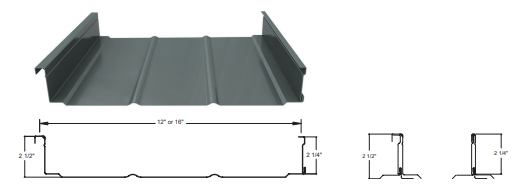
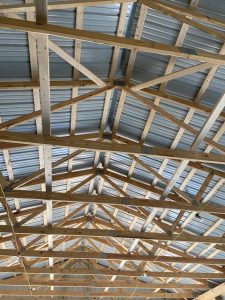 DEAR POLE BARN GURU: Would it be possible to install a 1/8- 1/4 ‘’ steel plate C-shaped with a “tail” extending from back side to tie a bottom chord and king post together and then cut out a 6’’ section to allow for a garage door opener install. GABE in SIMCOE
DEAR POLE BARN GURU: Would it be possible to install a 1/8- 1/4 ‘’ steel plate C-shaped with a “tail” extending from back side to tie a bottom chord and king post together and then cut out a 6’’ section to allow for a garage door opener install. GABE in SIMCOE 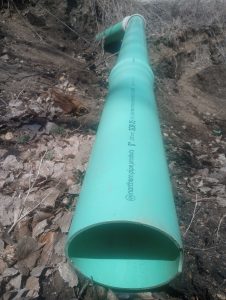 Mike the Pole Barn Responds:
Mike the Pole Barn Responds: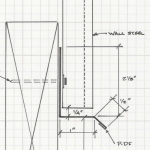

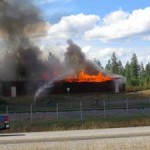 When exposed to fire, Dricon® automatically reacts with the combustible gases and tars normally generated by untreated wood, converting them to carbon char, with harmless carbon dioxide and water. The surface char acts to insulate underlying wood, and the carbon dioxide and water vapor dilute the combustible gases to help reduce flame spread and smoke.
When exposed to fire, Dricon® automatically reacts with the combustible gases and tars normally generated by untreated wood, converting them to carbon char, with harmless carbon dioxide and water. The surface char acts to insulate underlying wood, and the carbon dioxide and water vapor dilute the combustible gases to help reduce flame spread and smoke.





